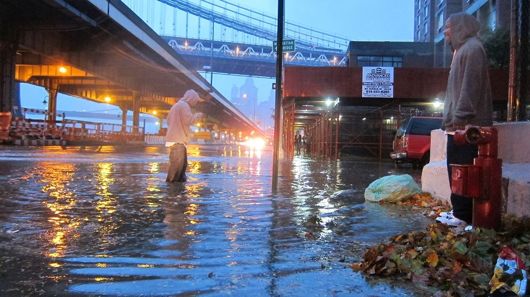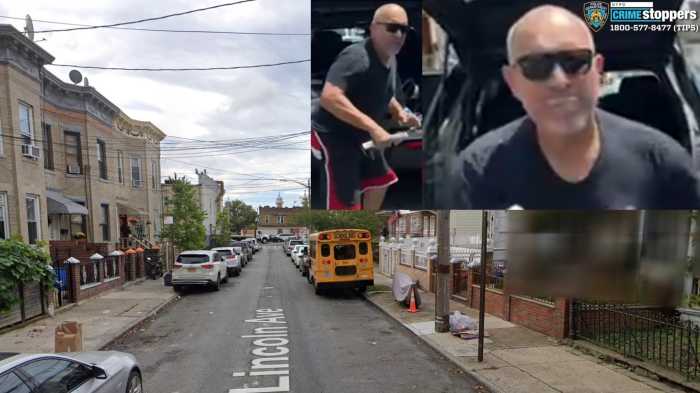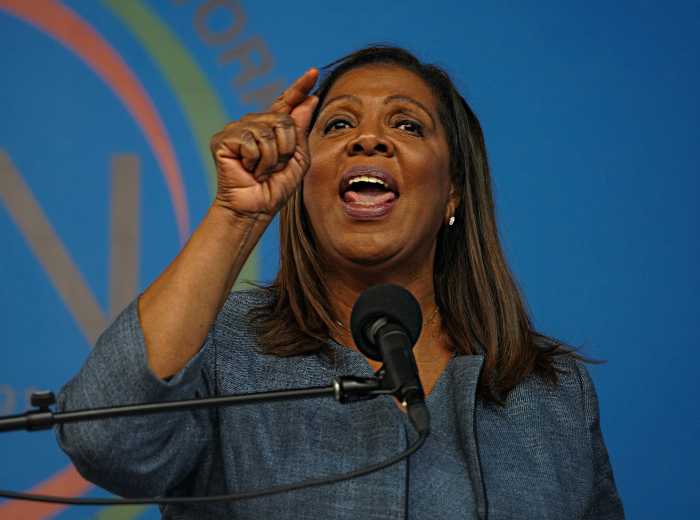
South Street Seaport was severely flooded by Hurricane Sandy in 2012. Not much has been done since to protect it — or the rest of Downtown — against another storm.
BY DENNIS LYNCH
Four years after Hurricane Sandy inundated Lower Manhattan and caused billions of dollars in economic losses, the road to a resilient Downtown is still as muddy as ever.
There are no concrete designs for flood protections, nowhere near enough money allocated to fund them, and no clear source to make up the shortfall, leaving local leaders outraged at how little progress has been made in protecting one of the city’s most vulnerable and densely populated neighborhoods from future storms.
“We have no idea how much it will cost because there’s no plan in place, because only now has community engagement started,” said Catherine McVay Hughes, former chairwoman of Community Board 1 and the former co-chair of the Lower Manhattan Planning Committee for the state’s post-Sandy New York Rising program.
Last year the city estimated it would cost $608 million just for a series of measures stretching along the East River waterfront from 14th St. down to The Battery, which would still leave Battery Park City and Tribeca unprotected. The city requested $500 million from the federal government for that limited plan, but received only $176 million, which was earmarked entirely for the Two Bridges area, leaving none at all for any projects south of Montgomery St.
This summer the city allocated $100 million to fund resiliency projects along the Financial District waterfront down to The Battery — an area designated “Manhattan Tip” — and an additional $8 million specifically earmarked for The Battery to fortify the popular park at the southernmost point of the island.
Local leaders are certain that this amount isn’t enough to pay for all the measures necessary to protect Manhattan Tip, but they can’t even say how much more they need because the city says it won’t be finished with its analysis until Spring 2018.
A previous estimate put the price tag at $234 million, but the Mayor’s Office wouldn’t speculate on the cost of fortifying Downtown until the city finishes the studies that are part of its Lower Manhattan Coastal Resiliency Project, which also requires community outreach and logistical planning. The city doesn’t expect to put shovels in the ground before Fall 2018 — fully six years after Sandy struck.
The city started the community outreach phase of the LMCR Project this summer and says it will continue with the study and design phase, while continuing efforts to raise the hundreds of millions of dollars required to build whatever projects result.
The LMCR Project is just one of several citywide storm-proofing projects that grew out of former Mayor Bloomberg’s multi-billion-dollar citywide resiliency initiative. The initiative created a holistic citywide design, but then split it up into smaller localized projects to be designed and funded individually. Downtown leaders and elected officials formed the Lower Manhattan Coastal Resiliency Task Force to see the project through below 14th Street.
Task force member and CB1 Chairman Anthony Notaro said he and his colleagues didn’t want to “sit around and wait” for the city to present a design — they wanted drive the process.
“The city said ‘Hey here’s a multi-billion-dollar plan,’ Well, that’s not going to happen tomorrow — everyone has to say how can we implement that,” Notaro said. “There’s no way to say what neighborhood is more important than others. The issue is how to get people to stand up and say ‘Here’s what we need.’”
The city plans to present some preliminary design options to members of the task force in December, who will take them to the public for more input. Some proposals floated in the past include tall, grassy berms along the Downtown waterfront, and even building out flood-absorbing marshlands with landfill.
But even leaving aside such grand visions, there are still dozens of smaller scale repair, recovery, and mitigation projects south of Canal St. that are still only in the design and planning phases, four years after the storm,
There is still more than $45.6 million worth of repair and recovery work Downtown that is still just in the planning or design phase, according to the Mayor’s Office of Recovery and Resiliency, including a $2-million reconstruction of Mannahatta Park, and $3 million in repairs and mitigation at Pier 36.
Many wounds have still yet to heal. The Seaport’s iconic Bridge Cafe is still struggling to reopen after Sandy flooded its 222-year-old building. Other storefronts in the area have seemingly shuttered for good.
Notaro said he “has to be optimistic,” because the tasks ahead are so complex and daunting.
“Its important to know that everyone is committed to doing this. There are regulations to comply with, lots of people to get agreement with. Public facilities are involved. It’s a complex thing,” he said. “We are attempting to do things that have never been done before on this scale. Our federal, state, and city governments are all focused on it — to spend money wisely, and engage the community. We’re all in it together.”
In the meantime, the city’s Department of Small Business Services is offering free property risk assessments to small businesses affected by Hurricane Sandy, recommending “customized physical, operational, and financial preparedness and resiliency-related improvements to business owners.” Participating businesses will be eligible for a $3,000 grant to buy items recommended by the assessment. Apply at BusinessPREP@sbs.nyc.gov.




































